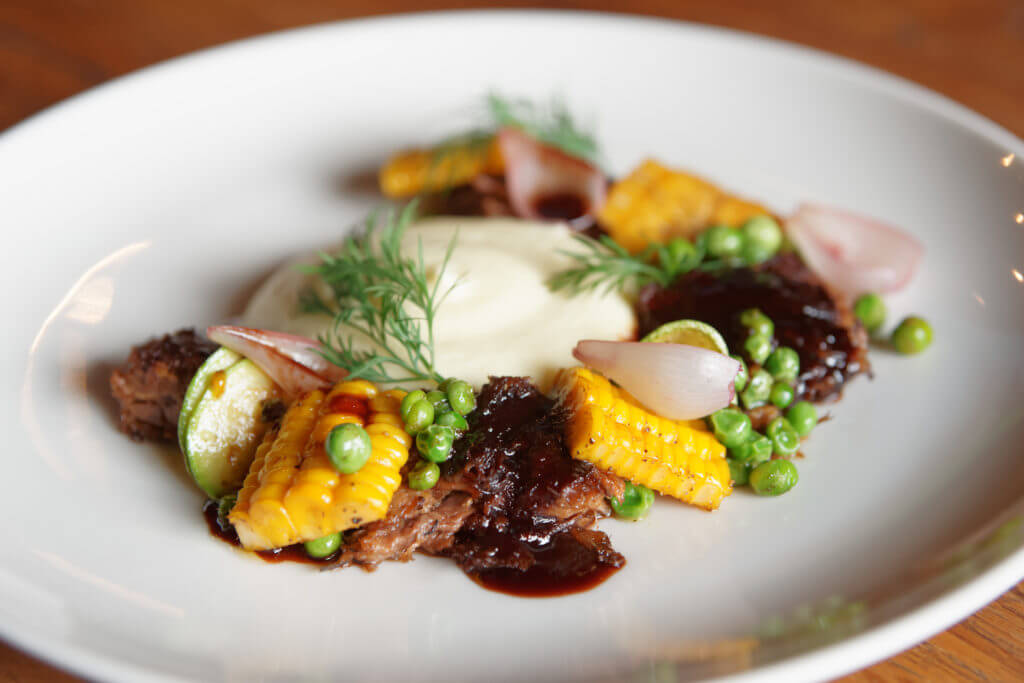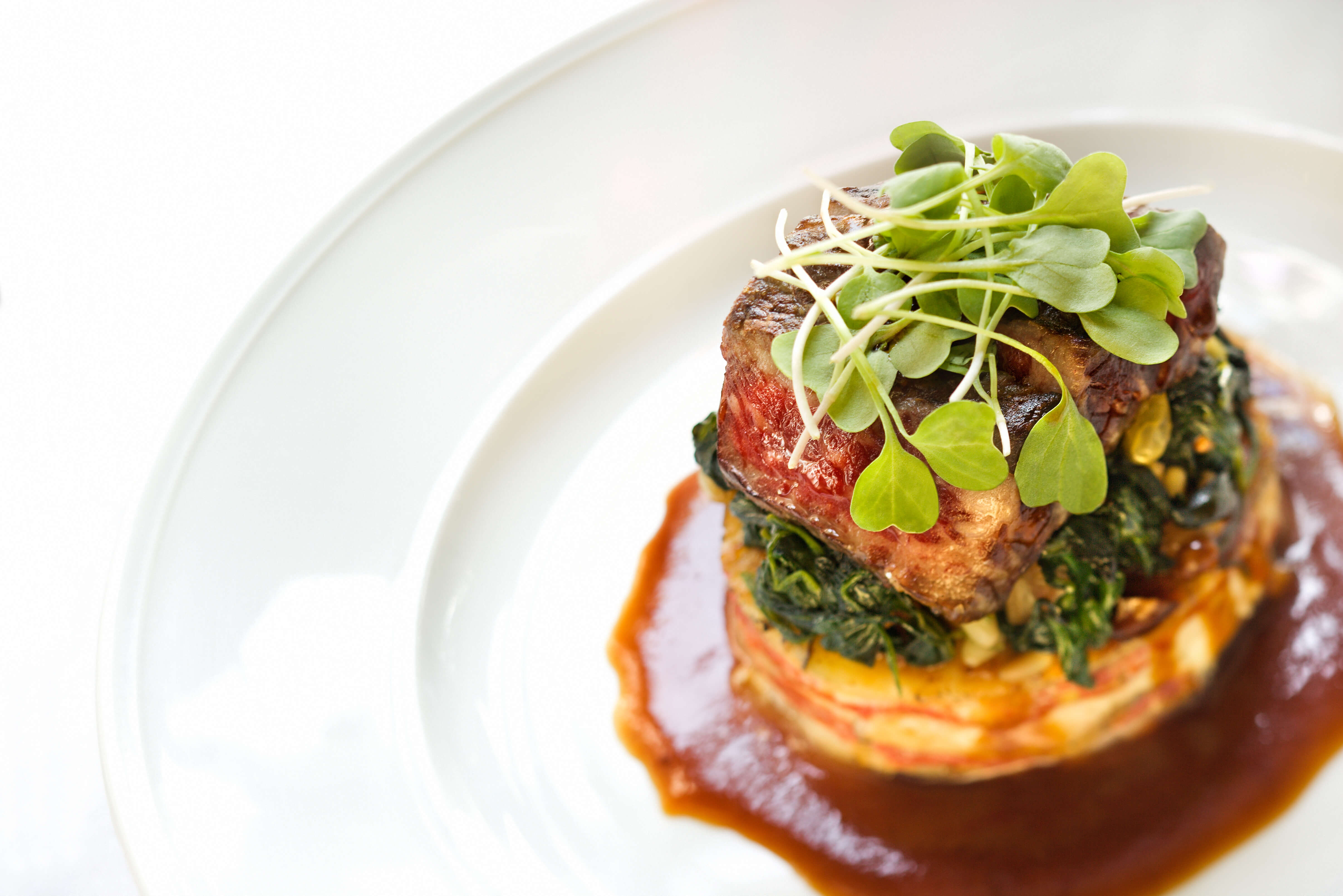Our Guide To Escoffier’s 5 Mother Sauces
He didn’t realize it when he published them, but Auguste Escoffier left a lifelong culinary legacy when he created the five “mother sauces.”
They are the basis for virtually every sauce used in modern cuisine…and if you’re attending a culinary school you’re sure to learn them as a foundation for your education.
From alfredo to bourguignonne, demi-glace to cheddar cheese, you’ll discover that one of the five mother sauces is the base in hundreds of unique sauce recipes. Understanding their origins, their composition, and how to master them should be a priority for anyone studying the culinary arts.
Some critics claim that the mother sauces are “outdated”…but the humble pasta sauce and gravy wouldn’t exist were it not for this foundation…not to mention the myriad delicious creations that begin with these building blocks.
Here is a brief tour of the five mother sauces…
Hollandaise Sauce
Probably the most well-known of the mother sauces, it’s a household name in restaurants, where it’s served with Eggs Benedict – an American creation that’s known for its rich, creamy, calorie-loaded character.
Eggs, butter, and lemon form the basis for this versatile sauce that goes beyond the breakfast and brunch table. It’s been poured over grilled and steamed vegetables like asparagus, artichokes, and broccoli, and kept as a side dipping sauce for a range of dishes.
One of the most popular variations is Bearnaise – one of the sister sauces that also includes Sauce Mousseline, Sauce Noisette, Sauce Dijon, and Sauce Maltaise.
Hollandaise is a delicious, rich addition to many dishes, but it can be finicky to prepare. Temperature and technique play big roles in the making of a smooth, creamy Hollandaise, so it’s not very common in everyday cooking.
Béchamel Sauce
The white sauce of the family, béchamel is a flavor overload that begins with flour, butter, and milk…the seasoning is up to the individual chef.
The French usually keep it very simple – a little salt and pepper – while the Italian version often includes a little nutmeg. Many chefs will steep the milk with a bay leaf and a whole onion that’s been studded with a couple of cloves, giving the milk a rich flavor before it’s combined with the roux.
However you choose to flavor béchamel, it will be the basis for nearly every butter or cream-based sauce you’re preparing. Even a simple mac ’n cheese begins with this base!
While Chef Escoffier didn’t invent this recipe, his interpretation of this mother sauce is considered the culinary authority.
Culinary & Pastry Career Survey
Culinary & Pastry Career Survey
What's your ideal culinary career? Answer 20 simple questions and see if your dream career gets revealed to you.

We’ve compiled of all of the essential questions into one handy guide: Career options, description of skill requirements, and more!


Velouté Sauce
This silky, blonde mother sauce shares some common traits with béchamel, but instead of adding milk to the roux, a clear stock is added. The velouté sauce has a pale blonde color because the bones aren’t roasted before creating the stock.
Any bones can be used – fish, veal, beef, poultry – as a stock base for velouté, just as long as they aren’t roasted, as this darkens the stock and changes the flavor profile.
Once you have the base, a variety of ingredients can be added…wine, cream, flavored juices. The only limit is your imagination with this versatile sauce.
 A good brown sauce helps bring out the flavor in meat.
A good brown sauce helps bring out the flavor in meat.Tomato Sauce
Sure, we know it as ‘pasta sauce’…but a good tomato sauce base can do so much more. Traditionally it’s seasoned with oregano and basil, onions and garlic, cayenne and coriander, and suits a range of dishes…rice, pasta, fish, poultry, pork, beef, potatoes…you get the idea.
Escoffier’s traditional ‘sauce tomate’ begins with salted pork belly, onion, bay leaves, thyme, puréed or fresh tomatoes, roux, garlic, salt, sugar, and pepper. If that looks too ambitious – or you’re following specific dietary restrictions – you can leave out the pork belly and the roux and make a basic tomato sauce.
This sauce may be a little out of date, but it’s still a delicious foundation for tomato-based recipes.
Espagnole (Spanish) Sauce
Believe it or not, this sauce has nothing to do with Spanish cuisine, per se. As the story goes, King Louis XIII’s bride, Anne – a Spanish princess – had Spanish cooks who insisted on putting tomatoes in the basic brown sauce to give it a more well-rounded flavor. The sauce was a smash hit and named after their country.
Unlike the other mother sauces, Espagnole has very strong flavors and is usually diluted with another sauce or broth – it’s rarely served on its own. The rich, distinct flavor comes from roasted veal bone broth, rather than beef, setting it apart from it’s milder mother sauces.
You’ll find Espagnole sauce at the base of favorites like sauce bourguignonne, mushroom sauce, and a creole-inspired sauce Africaine.
Whether you’re an amateur cook in your home kitchen or studying at a culinary school to further your career in the industry, having a mastery of these five mother sauces will elevate your cooking. They form the foundation for so many creative – and traditional – dishes, and they’re yours to explore.
Did you enjoy this article? Then you’ll probably like these ones, too:
This article was originally published on August 4, 2014, and has since been updated.


